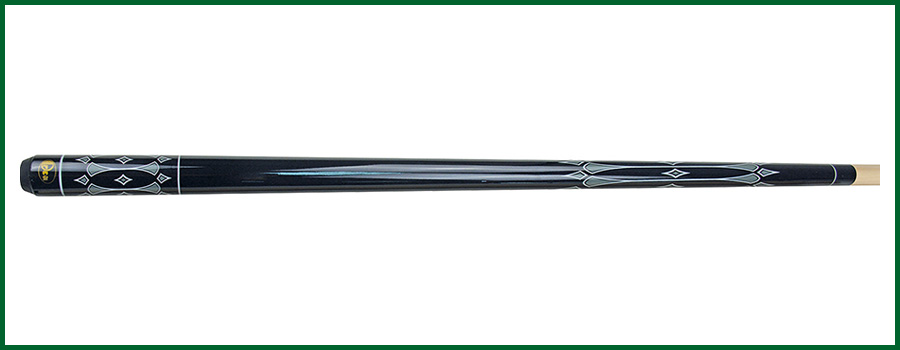
Carom billiard cues have specialized refinements making them different from the typical pool cues with which many people are more familiar. Carom cues tend to be shorter and lighter overall, with a shorter ferrule, a thicker butt and joint, a wooden joint pin (in high-end examples), and a collarless wood-to-wood joint (for a one-piece cue "feel"). They have a fast, conical taper, and a smaller tip diameter as compared with pool cues.
Typical carom cues are 140–140 cm (54–56 in) in length and 470–520 g (16.5–18.5 oz) in weight – lighter for straight rail, heavier for three-cushion – with a tip 11–12 mm (0.43–0.47 in) in diameter. The specialization makes the cue significantly stiffer, which aids in handling the larger and heavier billiard balls as compared with pool cues. It also acts to reduce deflection (sometimes called "squirt"), which is the displacement of the cue ball's path away from the parallel line formed by the cue stick's direction of travel. It is a factor that occurs every time English (side) is employed, and its effects are magnified by speed.
In some carom games, deflection plays a large role because many shots require extremes of side-spin, coupled with great speed; this is a combination typically minimized as much as possible, by contrast, in the pool. The wood used in carom cues can vary widely, and the highest cues are handmade